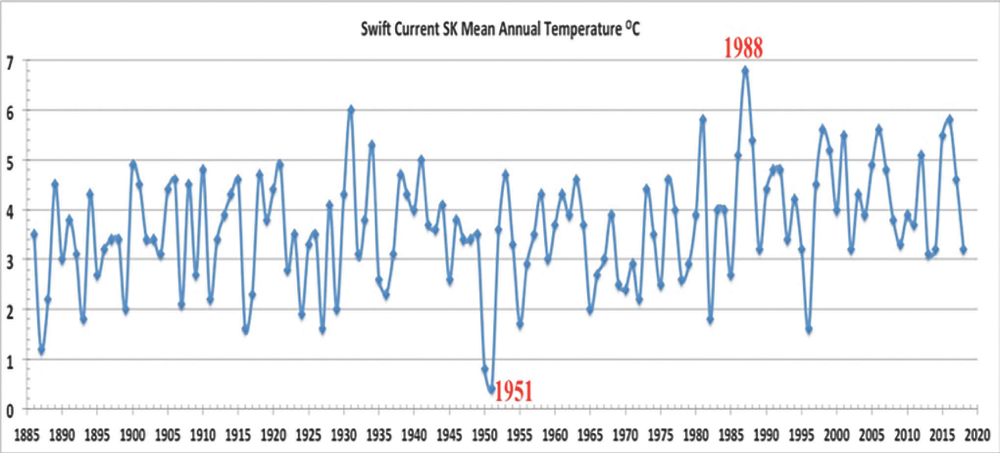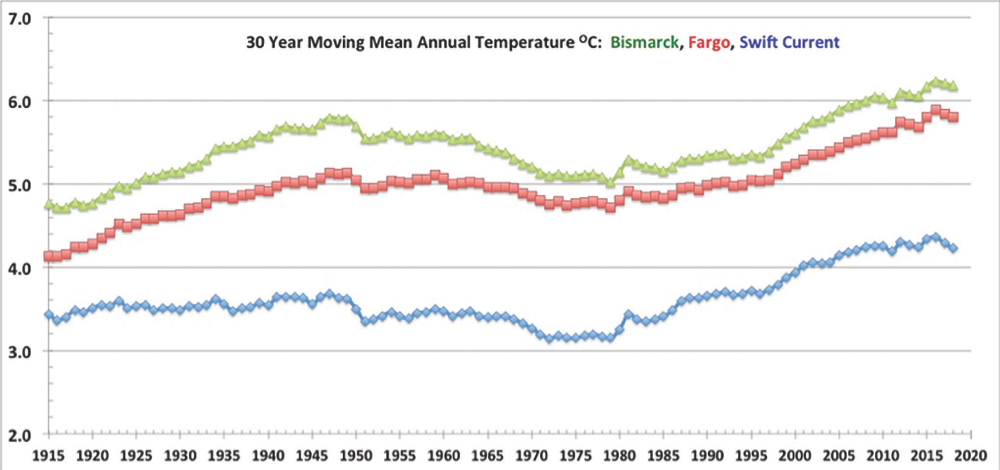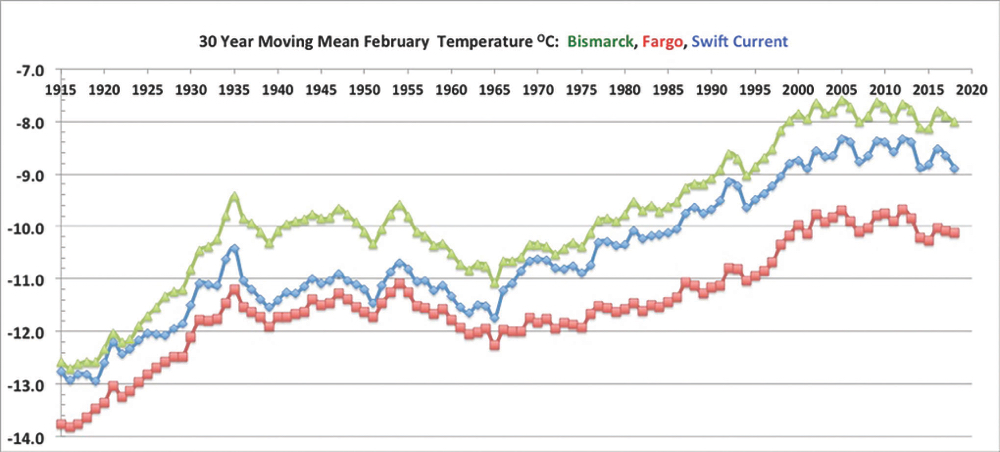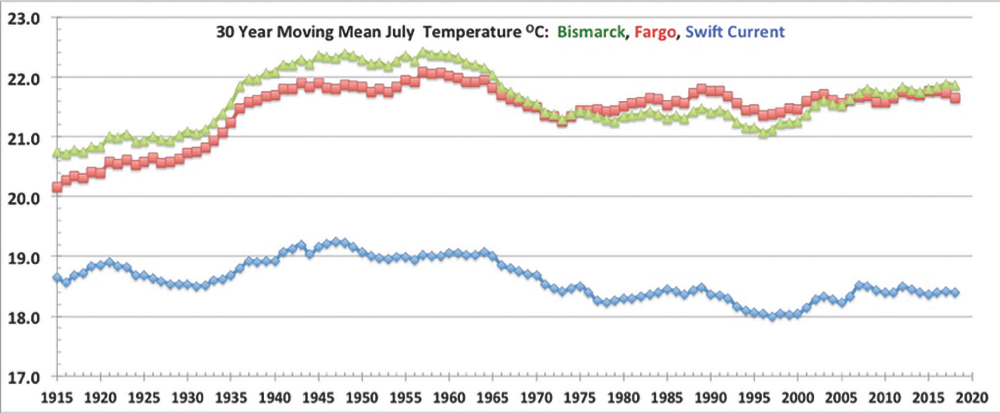Regular readers will recall my earlier column that provided annual and monthly temperature for Swift Current, Sask., from a complete record back to 1886. The data was compliments of a long line of dedicated scientists at the Swift Current Federal Ag Research Station.
In this piece, we will expand the data to two other sites and further clarify the difference between weather and climate.
Weather
We all experience weather and have first-hand experience with how it fluctuates from day to day, week to week, month to month and year to year.
If we want to get a bird’s-eye view of how the temperature changes from year to year we can make a simple graph with year on the X-axis and mean annual temperature on the Y-axis (Figure 1 below).

In 133 years of records, the hot year was 1988 at 6.8 C. I remember that summer very well. Many air conditioning units were installed in Saskatoon homes that summer. I remember 1951 not so much for the cold but for the crop left in the field come winter — just like 2019.
Wide swings in annual temperature and precipitation are the norm for continental interior areas. When we hear the weather forecaster talk about “normal,” we are really talking about the arithmetic average of a series of abnormalities.
Climate
I think it is safe to say that all who study climate use a 30-year average to separate climate from weather. A weather record that starts in 1960 has the first climate point at 1990. To document climate change requires a very long record.
Read Also

Gentle treatments for pain in the neck
Heading toward year-end, people unknowingly tense up against the cold and busyness, causing neck pain that can often be treated with appropriate support and gentle mobility, athletic therapist Kathlyn Hossack says.
Over the decades, Environment Canada has published Canadian Climate Normals and updated those normals every 10 years. That information is readily available at weather.gc.ca. The current Climate Normals are for 1981–2010. On the website, data is also available for 1971–2000 and 1961–1990 and a paper copy of 1951–1980 is also available.
If we want to trace climate change, we must look at how the 30-year average changes. We did just that for the long record of temperature data from Swift Current in my earlier column. A summary of the observations from that data include the following:
1. January, February and March have a temperature range of 5+ C and that large range drives the annual temperature.
2. January to March climate cooled from around the 1940s to 1970s then warmed sharply from about the 1970s to 2000. The current warming trend ended around the turn of the century.
3. July climate is actually cooler now than it was prior to 1965.
4. September: the 30-year average temperature has risen from about 2000 to 2015.
5. Other months have not changed much.
However, that is only one site. Attempts to do the same with other sites in Western Canada have not been possible because of the lack of data availability from Environment Canada. In recent weeks, we have learned how to access data from the extensive U.S. National Weather Service.
Graphs of 30-year moving average temperature for mean annual and each month have also been prepared for Fargo and Bismarck, N.D. The parallels between Swift Current and the two North Dakota stations are remarkable. Space limitations do not allow us to show all the graphs for all the months; however, the 30-year moving average mean annual, February and July temperatures are provided in Figures 2, 3 and 4, respectively.

The annual warming from about 1920–1945 was greater at Fargo and Bismarck than for Swift Current (Figure 2 above). For all three sites, the recent warming period ended about the turn of the century.
The parallels between the three stations for 30-year moving average temperature for February (Figure 3 below) is very obvious as is the end of warming at about 2000. There is some indication of a lowering of temperature in recent years but the time is too short to be sure. Only time will tell.

In July, the climate is actually cooling (Figure 4 below).
It is very clear all three locations are dancing to the same drummer — and it is not likely CO2 because CO2 has risen continuously for many decades.

What climate crisis?
After assembling and studying climate data for a few stations in the Northern Great Plains of North America, I seriously question the current frenzy about a climate crisis. I see nothing in this data to suggest that our ability to grow crops will be limited by very high temperatures in the months that we grow crops.
If folks have other climate data, we would be very pleased to see it. Temperature is only one part of the climate equation. Precipitation is a major concern to farmers and it can be too little or too much. We have assembled precipitation data for the same stations for the same time period. We will provide that data in a future issue.
















